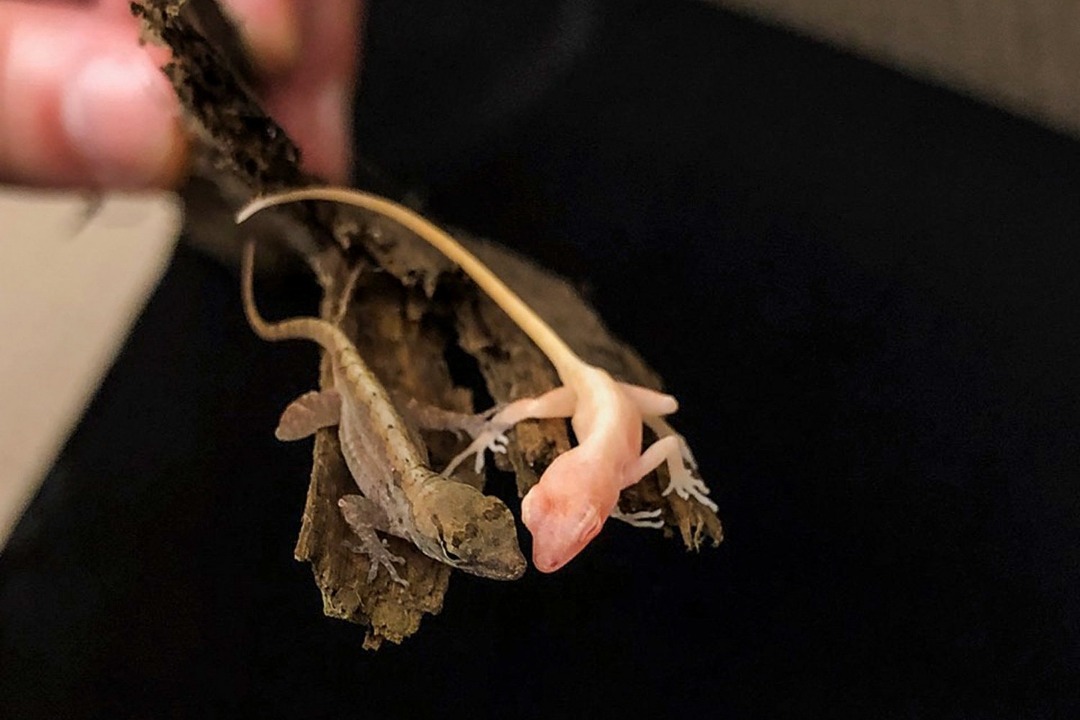Introducing the World’s First Gene-Edited Lizard
Scientists have been altering the genes of mice, pigs, goats, chickens and butterflies for quite some time. But even as Crispr, a transformative gene-editing tool, made seemingly impossible genetic alterations possible, reptiles had remained untouched.
Scientists have been altering the genes of mice, pigs, goats, chickens and butterflies for quite some time. But even as Crispr, a transformative gene-editing tool, made seemingly impossible genetic alterations possible, reptiles had remained untouched.
That changed with the birth of a nearly transparent Anolis lizard, the first gene-edited reptile, according to the draft of a study made public this week.
Ashley Rasys, a graduate student at the University of Georgia who was involved in the lizard’s creation, arrived shortly after he broke through his thick M&M-size shell.
“I was floored,” she said.
“We weren’t really expecting to generate an albino lizard at first,” she added.
The steps involved in creating him are outlined in the paper, which was first reported by Science magazine. Scientists now have another model to utilize in genetic research.
“When we want to understand human biology we go to one of these model systems,” said Douglas Menke, the director of the genetics department at the University of Georgia and another author of the study. Until now, all 10,000 species of reptiles have been off-limits. “People thought they were just too hard to work with,” he said.
The challenge was figuring out how to access lizards’ reproductive systems in the right way at the right time. What his team has proved, he said, is that it is possible.
“We can now create two to four mutant lizards from just a day’s work,” he said.
It took the scientists about two years to figure out how to access the reproductive system of the lizards in the desired way. Then they had to use their genetic scalpel to target the lizard mom’s eggs, while they were still growing inside her.
The scientists could have altered a variety of genes, but they focused on the mutation that codes for albinism in large part because that tweak is visual. Producing an albino lizard would show their gene editing was successful.
They thought it would take at least two generations to get there, however.
Having an albino mother does not mean a person — or a lizard — will be albino. Both the mother and father must carry the mutation.
Because researchers were targeting the lizards’ eggs before they were fertilized by the father, they thought that getting the albino mutation into the paternal DNA would take additional breeding.
And yet their very first gene-edited lizard emerged without any pigment. Three of the other 146 edited eggs did as well. Somehow they had altered both maternal and paternal DNA in one fell swoop. The researchers have a hypothesis about why that will require additional study.
George Church, a geneticist affiliated with Harvard and M.I.T., called the application of Crispr to lizards “significant.” Dr. Church uses genome modification techniques to try to reverse aging in dogs, to make pigs more compatible for organ transplants in humans, and to protect elephants from herpesvirus.
There is a movement to use gene editing to combat pathogens and environmental threats. Many reptiles are endangered. “Editing could help,” he said.
Jonathan Losos, an evolutionary biologist from Washington University in St. Louis, was also enthusiastic. “This study opens the door to studying the genetics of lizard evolution,” he said.
Reference:https://www.nytimes.com/2019/04/05/us/crispr-albino-lizard.html





ارسال به دوستان